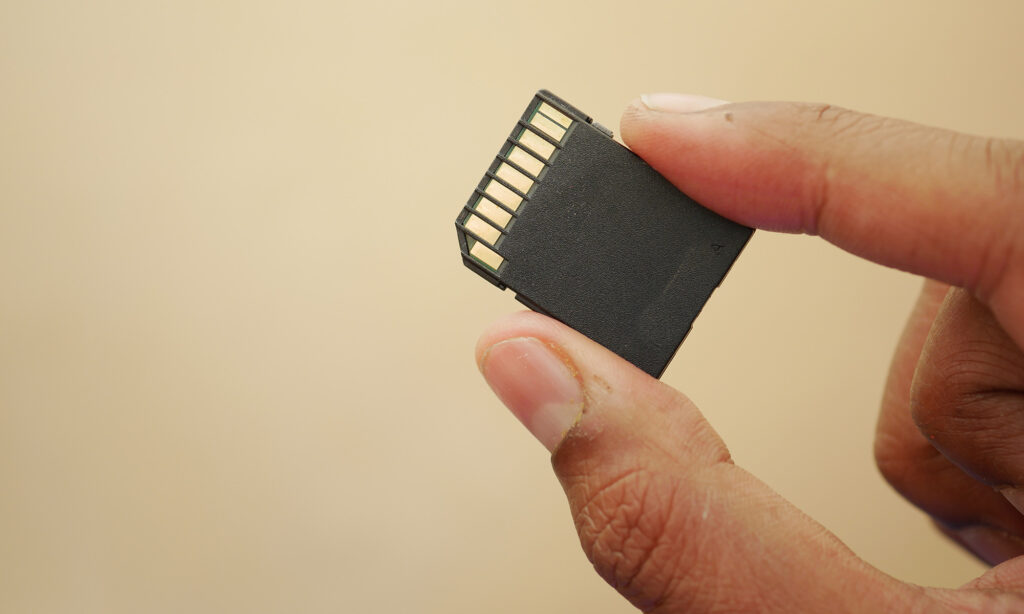Smartphones are becoming more and more advanced with the release of every update. For many people, smartphones are the center point of the workday and the source for entertainment options on personal time for most users. According to Statista, in 2023 there will be more than 6.8 billion smartphones in use around the world. That equates to, on average, one for 85% of humanity.

As smartphones evolve, manufacturers must balance what new technologies they include and which ones they don’t. In recent years, there has been a trend for major manufactures to eliminate the option for removable storage, particularly from flagship models. This suggests the idea that microSD memory cards are not available and not being used in smartphones, but they still are definitely in mid-range and low-cost smartphones, and in fact, the case can be made that they should become standard once again to meet the rapidly expanding need for more storage.
More Video, More Storage
In years past, video capture and editing equipment that filled an entire room doesn’t even compare to the quality and usability of the video capability in today’s average phone. High quality video is a central requirement to content creation. It is the foundation of social networks because of its capacity to educate, inform and entertain in just a few seconds. Its value is in its versatility, video allows people to deliver their message to the world engaging multiple human senses at once with images, sound, and text.
Smartphone video is even more flexible than in previous generations. Now that most people, particularly in developed nations, own a smartphone, video is more accessible than ever before. Users can create, edit, share, and view videos in seconds. With all this, storage is absolutely vital.
Image resolution is steadily increasing. Most smartphones can now record in at least 1080HD and 4K. With 4K requiring four times as much storage space compared to HD video. Knowing 8K recording is on its way, storage requirements will only skyrocket.
Because of this, video can easily overwhelm internal storage in seconds. The amount of storage consumed by video file size has a lot to do with the type of camera, DSLRs, mirrorless cameras or smartphones resolution setting used for recording. Here’s a look at how some other flagship phones handle one minute of 4K video footage:
- iPhone 14/Pro/Plus allows 4K video recording at up to 60fps both on front and rear cameras. It means that 4K 60fps will be the choice for an increasing number of users. But shooting one hour of 4K 60fps video consumes around 24 GB of memory. This makes iPhone 128GB easily out of storage when taking a 5-hour 4K video in HEVC, let alone the ProRes format. Specifically, a less than one-hour 4K ProRes footage could use up all the memory of a 256GB model iPhone.
- Samsung Galaxy S22 supports recording 4K in HDR10 mode of HEVC codec, which brings crisper and sharper image of 4K UHD video, but also takes more storage space. A 1-minute 4K H.264 video shot by Samsung Galaxy S22 and Google Pixel 6 takes up around 360MB. Moreover, there is a 10-minute limit for 4K video recording with Samsung Galaxy phones, probably in consideration of the big file size of 4K. So technically, you can download a 120-minute feature length 4K movie on Samsung Galaxy S22, but it won’t let you record 4K or 8K video longer than 10 minutes.
While prototypes have been developed for 2TB microSDXC cards and one manufacturer has started shipping 1.5TB, the 1TB microSDXC cards are readily available. According to PointerClicker, a terabyte of space can hold a 4K movie spanning 30 hours, whether shot in the 16:9 or 4:3 aspect ratios. can hold 8 hours of 4K RAW Video when a low-bitrate and frame rate is used. A higher bit-rate is determined by the recording device and factors such as a higher frame rate can decrease the number of hours that 4K video can be held by 1TB of storage.
Mobile Games
Mobile games are bigger today than ever. Not only are they more popular and earning more revenue, but they’re also taking up a larger portion of a phone’s available storage space. The closer mobile games come to PC or consoles in terms of graphics quality and performance, the more storage space they will consume to render those graphics. microSD memory cards with microSD Express, in particular, can play a significant role in expanding storage space, allowing users to play downloaded mobile games seamlessly and increasing the performance and responsiveness of gaming experiences. A recent article in US Today News quotes a game publisher: “Mobile game production is bound to become more complex, more time-consuming and larger, which will inevitably lead to larger app sizes. Companies that survive in the marketplace will only be those that can keep up with this trend.”
Newer games can easily require 10, 20 or 30 gigabytes of storage space, which is a big percentage of most smartphones available capacity. Without microSD card slots, only a few top-tier games will be able to be downloaded onto smartphones.

Consumers Want Storage Options
A recent survey reported that consumers are not happy with the removal of the microSD memory card slot. According to an online poll carried out by GSM Arena, users complain when a newly announced phone doesn’t have a microSD memory card slot. More than 84% of respondents say microSD slots are either nice to have, or they will not buy a new phone without a microSD slot. Only less than 15% of respondents say they do not need the microSD slot.
The reasons consumers want the extra storage option goes beyond plentiful storage. A memory card is a simple and easy way to transfer content. An example is when switching from an old phone to a new one. All one must do is take out the card and put it in the new phone and they have all their photos, music, videos automatically saved. In this way, they can reduce the phone’s internal memory consumption. According to recent information, without this option, it can take hours to fully set up a new smartphone and gather previous data.
New Possibilities with microSD Express
Recent advancements in microSD technology, such as microSD Express, enable a new world of opportunities for mobile devices. microSD Express, based on the SD7.1 specification, may have read and write speeds of up to 985 megabytes per second (MB/s), which is almost 10 times faster than the current popular generation of microSD UHS-I cards with maximum speeds of up to 104MB/s. As with microSD, microSD Express comes in various storage capacities. They are available in the standard microSD form factor and are backward compatible with older SD host devices through the legacy SD UHS-I interface. Additionally, three advanced security features were introduced in the SD 9 specification: Boot support, Trusted Computing Group (TCG) Storage and Replay Protected Memory Block (RPMB) authenticated memory. Those features open new opportunities of usage of microSD cards in semi-embedded applications. SD 9 also helps product manufacturers meet new right to repair regulations and simplifies upgrade and repair processes.
So, if consumers want microSD memory card slots, why are manufacturers not always including them? One of the main reasons is purely economic. Manufacturers cannot charge a premium for a microSD memory card slot, but they can charge a much more for a higher-tier model that comes equipped with a few extra gigabytes of internal storage. This means consumers end up spending more for the device itself. Additionally, some vendors put more emphasis on the aesthetic design of their smartphones over functionality and remove the card slot to make thinner phones. In actuality, microSD memory cards are 1mm thick, therefore the space required is minimal.

Another argument in favor of manufacturer-controlled storage is data can be backed up in the cloud. The challenge is cloud services depend on access to Wi-Fi, or robust cellular networks. But in many areas of the world, they are not always reliable and may be costly. Memory cards can always be accessed. Memory cards provide a hassle-free, solid-state media storage device. Newer memory cards such as the forthcoming microSD Express memory cards can have incredibly high-speed capabilities, allowing significantly faster upload and download of large content files or applications.
Conclusion
The cellphone manufacturers are going against popular sentiment by removing features that their buyers need, and are asking for. In an industry that is already competitive and where storage needs are increasingly more demanding, it is essential for phone manufacturers to be in tune with what consumers are looking for. Companies that fail to listen to users’ feedback run the risk of being left behind, as they’re not supporting and evolving with their customers’ preferences.
And as video and games demands for storage continues to increase, they will need this more than ever. But thanks to the availability of microSD Express, the performance of the removable memory cards becomes similar to the internal embedded memories– allowing new uses of the removable memory cards for applications running (e.g. games and even system apps) and real-time large file uploads (e.g. graphic files for gaming or VR apps).




